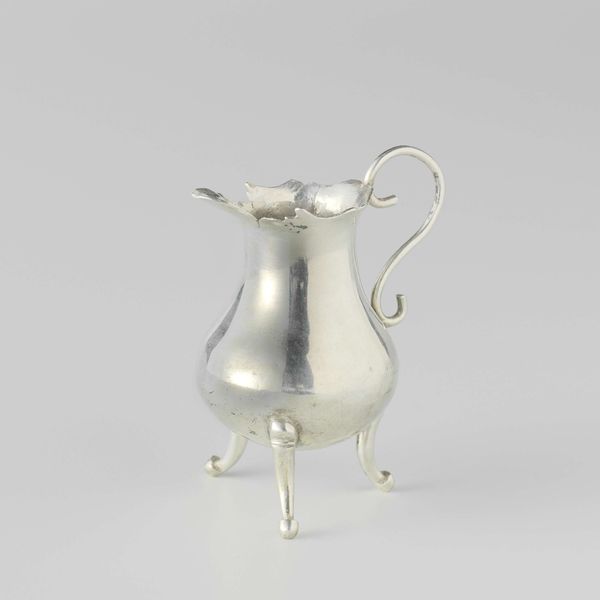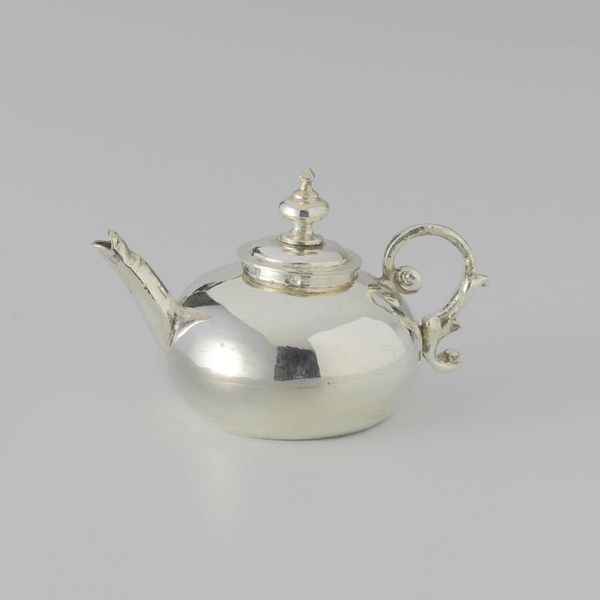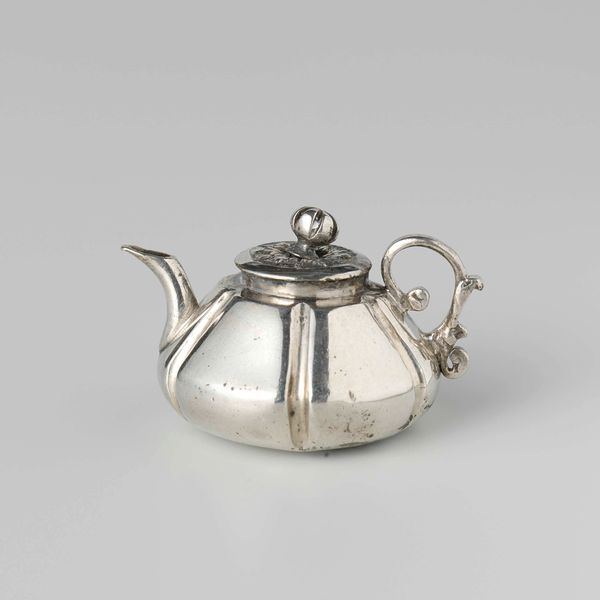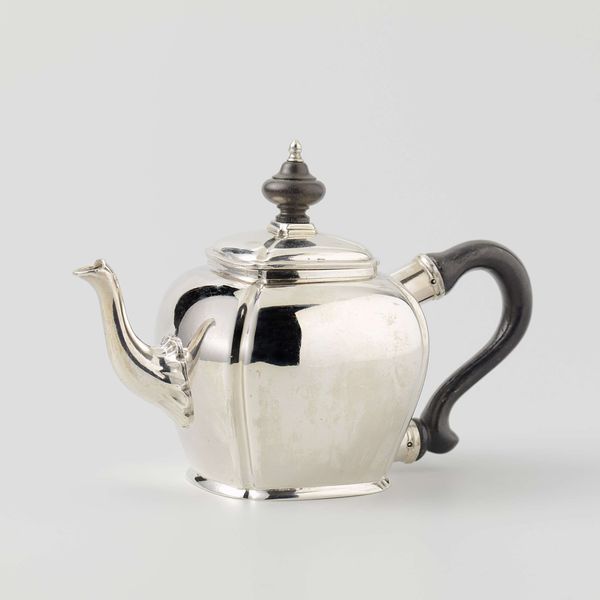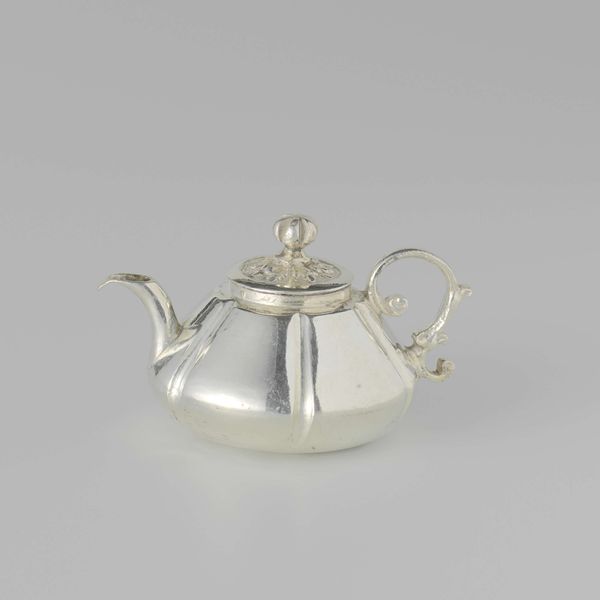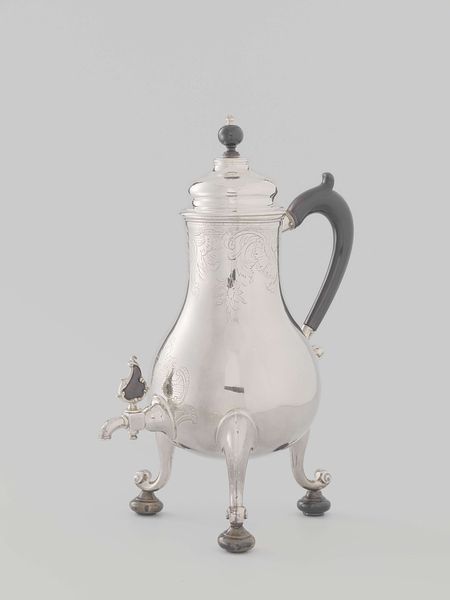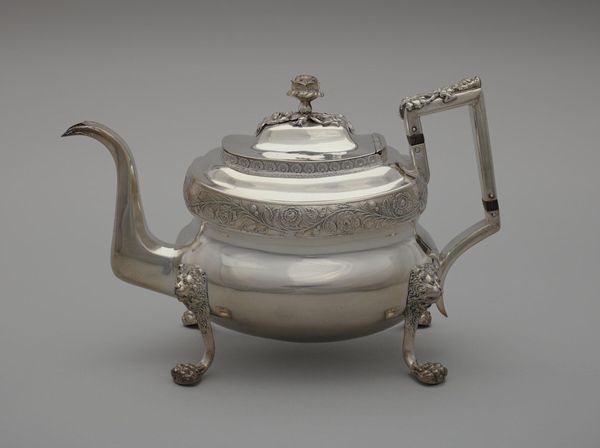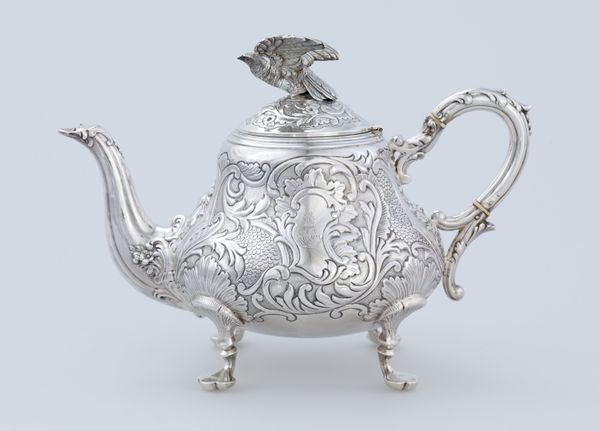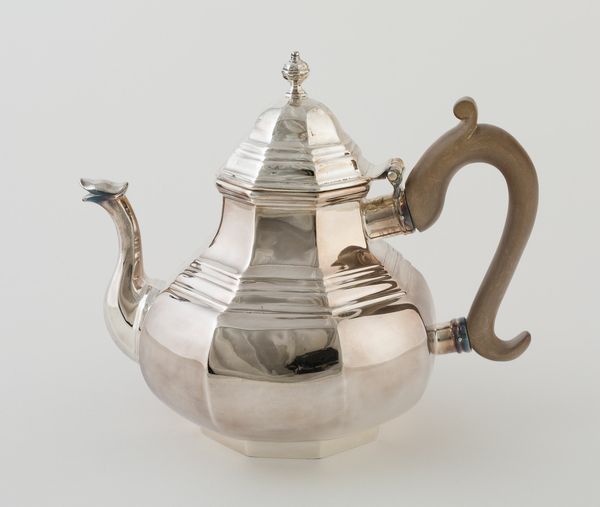
Dimensions: height 7.2 cm, width 7.5 cm, depth 2 cm
Copyright: Rijks Museum: Open Domain
This is a silver koffiepot made by Frederik Sleuman in the Netherlands, around the third quarter of the 18th century. Though seemingly a humble object, it speaks volumes about the Dutch Golden Age’s global reach, and the colonial trade networks through which luxury commodities like coffee entered Europe. The simple, elegant form of the pot is a legacy of the Dutch Republic's mercantile culture and relatively egalitarian social norms. Unlike the more elaborate styles favored by contemporary European royalty, this piece emphasizes functionality and restraint. Objects like this koffiepot, once symbols of elite status, became increasingly accessible to the middle class, subtly reshaping social rituals and domestic life. To understand it fully, we need to look into probate records, trade statistics, and of course, the visual language of Dutch design. This will reveal the story of how a simple object like this could become a marker of cultural identity and social aspiration.
Comments
No comments
Be the first to comment and join the conversation on the ultimate creative platform.
